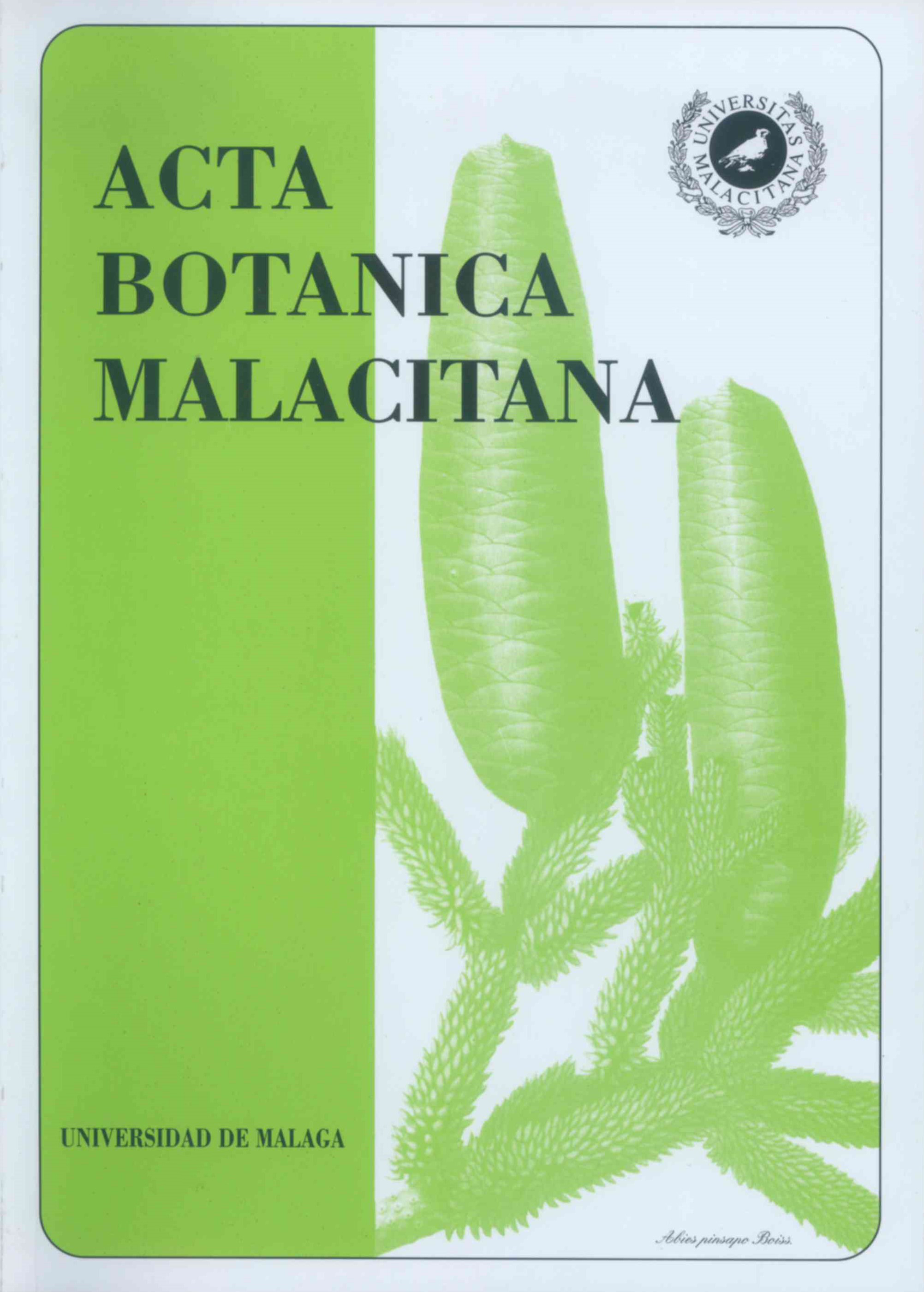Variation of specific morphological traits and ploidy level of five Aegilops L. species in Morocco.
DOI:
https://doi.org/10.24310/abm.v28i0.7265Abstract
ABSTRACT. Variation of specific morphological traits and ploidy level of five Aegilops L. species in Morocco.The genus Aegilops L. represents an important natural source of useful genes for wheat breeding, with particular emphasis on biotic and abiotic stress resistance. For successful crosses, the primarily step is to select appropriate Aegilops accessions. In this paper, we studied five Moroccan species of an Aegilops collection on the basis of spike structure and chromosome number. Twenty-eight specific morphological characters were used to differentiate the species. Statistical analyses, in particular the DFA, allowed the characterization of the genetic variability of the species; the two first standardized axes explained 96,2% of the total variability and 100% of the entities were classified within their own group. In addition, the dendrogram constructed using morphological data reveals a significant variability within and between species. Cytogenetic study revealed four species, A. geniculata Roth, A. triuncialis L., A. ventricosa Tausch and A.peregrina Maire & Weiller, to be tetraploid. However, A. neglecta Req. ex. Bertol., where only two accessions are represented in the collection, revealed to be hexaploid, and can then be classified as A. neglecta subsp. recta Chennav.
Key words. Aegilops, Variation, Morphology, Ploidy, Morocco.
RÉSUMÉ. Variation des caracteres morphologiques specificities et niveau de plordie de an(' espéces Aegilops L. au Maroc. Le genre Aegilops L. représente une importante source de genes, potentiellement utilisables dans Pamelioration des blés cultivés (Triticum spp.) notamment pour la resistance aux stress biotiques et abiotiques. Le choix des accessions Aegilops á employer, dans un programme d' hybridation interspécifique, necessite une caractérisation taxonomique et une evaluation préalables. L'objectif de ce travail a ete d'étudier des accessions, appartenant á 5 especes marocaines constituant une collection d'Aegilops, sur la base de caracteres morphologiques specifiques de l'épi et du niveau de ploYdie. La caractérisation phénotypique a été basée sur l'étude de 28 caracteres morphologiques qui discriminent entre les especes. Les resultats des analyses statistiques, en particulier de l'AFD, ont permis de caractériser la variabilite génetique de ces especes et ant donne un pourcentage d'appartenance á l'espece de 100%. Aussi, les deux premiers axes standardises expliquent 96,2% de la variabilité totale. Un demlrogramme a éte aussi construit, revelant une variabilite interspecifique. L'étude cytogenétique a révélé une tetraploYdie pour A. geniculata Roth, A. triuncialis L., A. ventricosa Tausch et A. peregrina Maire & Weiller. Quant á A. neglecta Req. ex. Bertol., une hexaploYdie a été mise en evidence pour les deux uniques accessions disponibles dans la collection, permettant de leur attribuer le nom A. neglecta subsp. recta Chennav.
Mots clés. Aegilops, Variation, Morphologic, Plolidie, Maroc.
Downloads
Metrics
Downloads
Published
How to Cite
Issue
Section
License
All information related to the licensing of published works in Acta Botanica Malacitana and copyright can be found in our Editorial Policy.







1.png)
